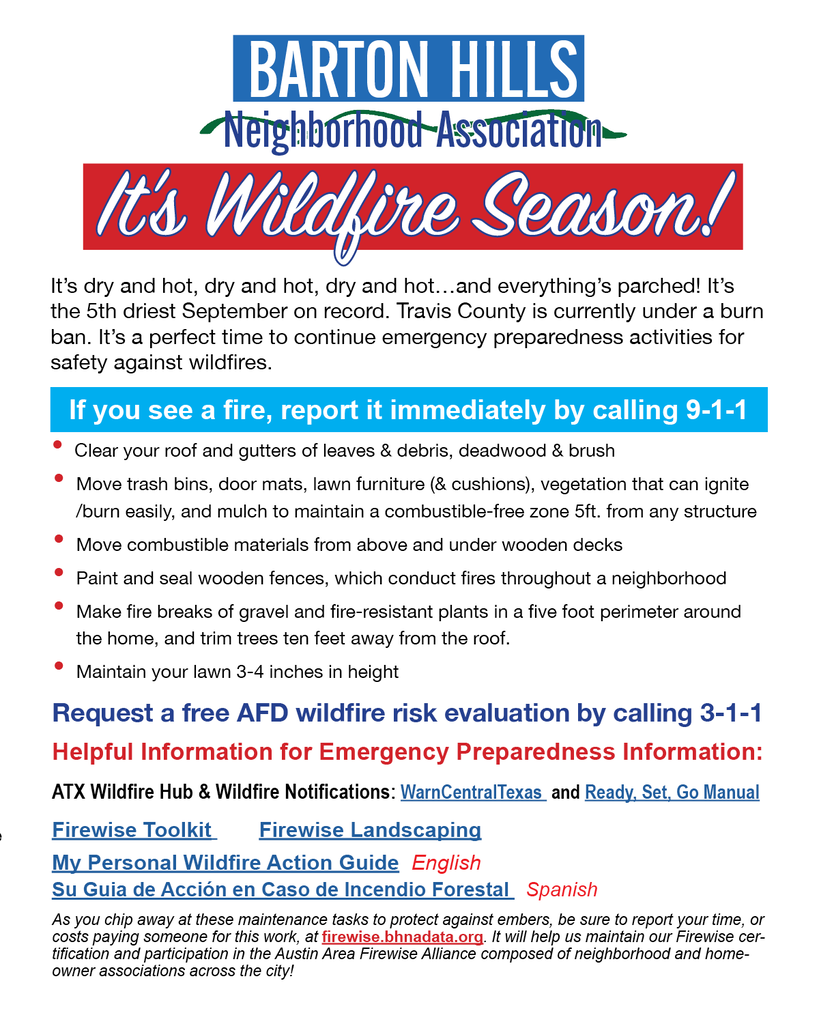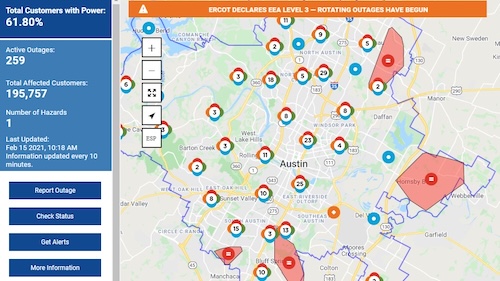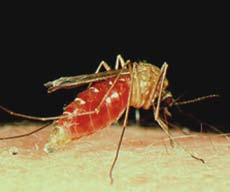Wildfire may be the most serious but is not the only community-wide risk to the Barton Hills neighborhood. Another risk, also increased by climate change, is electrical power outage. As anyone who was in Texas during winter storm Uri in February 2021 remembers, a wide-spread outage can leave us shivering (or sweating) in our dark houses without heat, air conditioning, electronics, or water for days or weeks.
An outage can happen in winter or summer, caused by a weather event, equipment failure, or system overload. As the demand for electricity increases and the weather becomes more extreme, the risk goes up. We can each take steps to prepare for a power outage whenever one occurs.
Austin Energy recommends the following preparations so we will be ready when the lights go out:
- Sign up to receive outage alerts and ensure that Austin Energy can contact you in case of an emergency. Register for text or e-mail alerts by texting REG to 287846 and entering your zip code. Make sure that the phone numbers and e-mail address associated with your account are current. Call 512-494-9400 to update your account information.
- Know how to report an outage and view the outage map. To report an outage, text OUT to 287846, To view the outage map if you have access to the internet, go to outagemap.austinenergy.com
- See if anyone in your household qualifies for the Medically Vulnerable Registry. If the person has a medical condition that could become life threatening during power outage, the Medically Vulnerable Registry could help. Although it will not guarantee uninterrupted power or priority restoration in an emergency, the Registry can assign a designated team member to work with you on a personalized backup plan. You can apply online or call 512-494-9400.
- Fill clean containers with water while you still have water service. You may need it later for washing, flushing, and drinking. Keep your refrigerator and freezer doors closed. If you lose water service during a hard freeze, turn off the water at the valve next to your water meter, so that you do not have leaks caused by the surge in pressure when service is restored.
- Prior to an approaching storm that has a high risk of power outage, fill up your vehicle with fuel. In addition to carrying you to safety if you need to evacuate, your car can be your “survival pod,” offering heat and air conditioning, as well as power outlets for recharging your electronic devices. Remember not to run your car’s engine in a closed garage to avoid the risk of carbon monoxide poisoning.
- Make an emergency kit including the following items:
Essential documents: copies (not originals) of personal documents such as driver’s license and passport, your Austin Energy account number, homeowner’s insurance, and family and neighbor contact information; Prescription medicine, flashlights, extra batteries, backup chargers for electronic devices, first aid kit, emergency blankets, portable battery-operated radio, bottled water, canned or dried food, hand-operated can opener, personal hygiene items; and a little cash. Store the kit in a safe, dry place, and make sure that everyone in your household knows where it is. - Take care of your pets. Add pet food to your emergency kit. If you have to evacuate, take your pets with you.
- Make an evacuation plan. If the power is out for several days, you may need to spend some time away from home. Consider who you would call and where you could go. The City of Austin would certainly open one or more emergency shelters if the outage is wide-spread or long-lasting, Determine where the nearest one is and how to get there.
- Regularly back up your computers to a separate device. Unplug your computer during a storm to avoid damaging it. Consider getting external poser sources for your electronic devices. You can purchase auxiliary power supplies that use replaceable or rechargeable batteries or solar energy. You can also purchase whole-house backup generators and battery power supplies, although they are expensive.
- Take precautions against accidents. While portable generators can help during an outage, operating them indoors is dangerous. Stay away from downed power lines. Cat litter or rock salt can prevent slippery sidewalks and decks. Contact Austin Energy by calling 512-494-9400 before trying to trim trees away from power lines.
- Plan how to pass the time. A power outage may last quiet a while, and you may be housebound. A battery-operated radio can keep you entertained and up-to-date on the news. Board and card games, books, and puzzles can also help you pass the time.
Craig Smith
ccraigsmith@icloud.com
BHNA Emergency Preparedness Committee
September, 2025
By Susan Donaldson
With recent rains preceded by a mild winter, this summer has been an active mosquito season. Of particular concern are mosquitoes carrying the West Nile Virus (WNV).
Mosquitoes are present in Central Texas year round, but the population is largest and most active from April through September. During the season, adult mosquito populations are monitored and tested for mosquito-borne viruses by the Austin/Travis County Health and Human Services Department. Check the Austin/Travis County Arbovirus Surveillance Maps for the latest information on West Nile Virus-confirmed mosquito activity.
Travis County has seen a total of 108 mosquito pools testing positive for WNV in 28 zip codes as of Sept. 4, 2012 — the highest number of positive pools detected since surveillance activities began in 2003.
In Travis County, there have been a total of 68 human WNV cases and three deaths reported from Jan. 1 to Sept. 12, 2012. In Texas, there were 1,182 human WNV cases and 53 deaths were reported from Jan. 1 to Sept. 12, 2012.
Preventing mosquitoes from biting you is the best defense. To help prevent bites, follow the four Ds:
- Dusk and dawn: Try to stay indoors at dusk and dawn. That is the time when mosquitoes likely to carry the infection are most active.
- Dress: Wear pants and long sleeves when you are outside.
- DEET: Apply insect repellent that contains DEET. Read and follow label instructions. Spray both exposed skin and clothing with repellent.
- Drain: Get rid of standing water in your yard and neighborhood. Old tires, flowerpots, clogged rain gutters, birdbaths and wading pools can be breeding sites for mosquitoes.
Check out this comprehensive article on less toxic or green mosquito control, including product toxicity comparisons, for additional options.
To report a mosquito problem, call (512) 978-0370 or click here to send an email to the City of Austin.
More information visit www.austintexas.gov/westnile.











